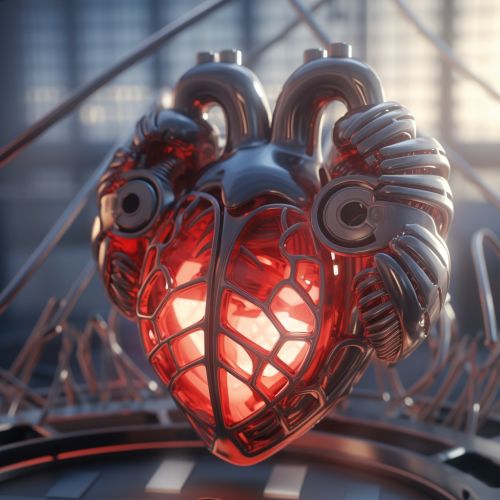Heart valve
Anatomy of the Heart Valve
The human heart is composed of four chambers, two atria and two ventricles, which are separated by a system of heart valves. These valves are essentially gatekeepers that ensure the unidirectional flow of blood through the heart and prevent backflow.


There are four heart valves in total: the tricuspid valve, the pulmonary valve, the mitral valve, and the aortic valve. Each valve is made up of several components, including leaflets or cusps, annulus, commissures, and sinuses.
Tricuspid Valve
The tricuspid valve, located between the right atrium and the right ventricle, is named for its three leaflets or cusps. These cusps are thin, fibrous structures that open and close to regulate blood flow. The cusps are attached to the annulus, a fibrous ring that provides structural support to the valve.
Pulmonary Valve
The pulmonary valve, situated at the exit of the right ventricle, is a semilunar valve with three cusps. It opens to allow blood to flow from the right ventricle into the pulmonary artery and then closes to prevent the backflow of blood.
Mitral Valve
The mitral valve, also known as the bicuspid valve due to its two leaflets, is positioned between the left atrium and the left ventricle. It is the only bicuspid valve in the heart and has a more complex structure compared to the other heart valves.
Aortic Valve
The aortic valve, located at the exit of the left ventricle, is another semilunar valve with three cusps. It opens to allow oxygenated blood to flow from the left ventricle into the aorta and closes to prevent the backflow of blood.
Function of Heart Valves
The primary function of the heart valves is to maintain the unidirectional flow of blood through the heart during the cardiac cycle. This is achieved through a process known as valvular function, which involves the opening and closing of the valves in response to changes in blood pressure.
Opening and Closing of Valves
During the systolic phase of the cardiac cycle, the ventricles contract, causing the atrioventricular valves (tricuspid and mitral valves) to close and the semilunar valves (pulmonary and aortic valves) to open. This allows blood to be pumped out of the heart and into the circulation.
During the diastolic phase, the ventricles relax, causing the semilunar valves to close and the atrioventricular valves to open. This allows blood to flow from the atria into the ventricles in preparation for the next cardiac cycle.
Heart Valve Disorders
Heart valve disorders can significantly impact the function of the heart and lead to serious health complications. These disorders can be broadly classified into two categories: valvular stenosis and valvular insufficiency.
Valvular Stenosis
Valvular stenosis is a condition characterized by the narrowing of the heart valve, which restricts blood flow. This can be caused by a variety of factors, including congenital defects, calcification, and rheumatic heart disease.
Valvular Insufficiency
Valvular insufficiency, also known as valve regurgitation, is a condition where the heart valve does not close properly, leading to the backflow of blood. This can be due to abnormalities in the valve leaflets, annulus, or supporting structures.
Treatment of Heart Valve Disorders
Treatment of heart valve disorders depends on the severity of the condition and the symptoms experienced by the patient. Options can range from medication to manage symptoms, to surgical interventions such as valve repair or valve replacement.
